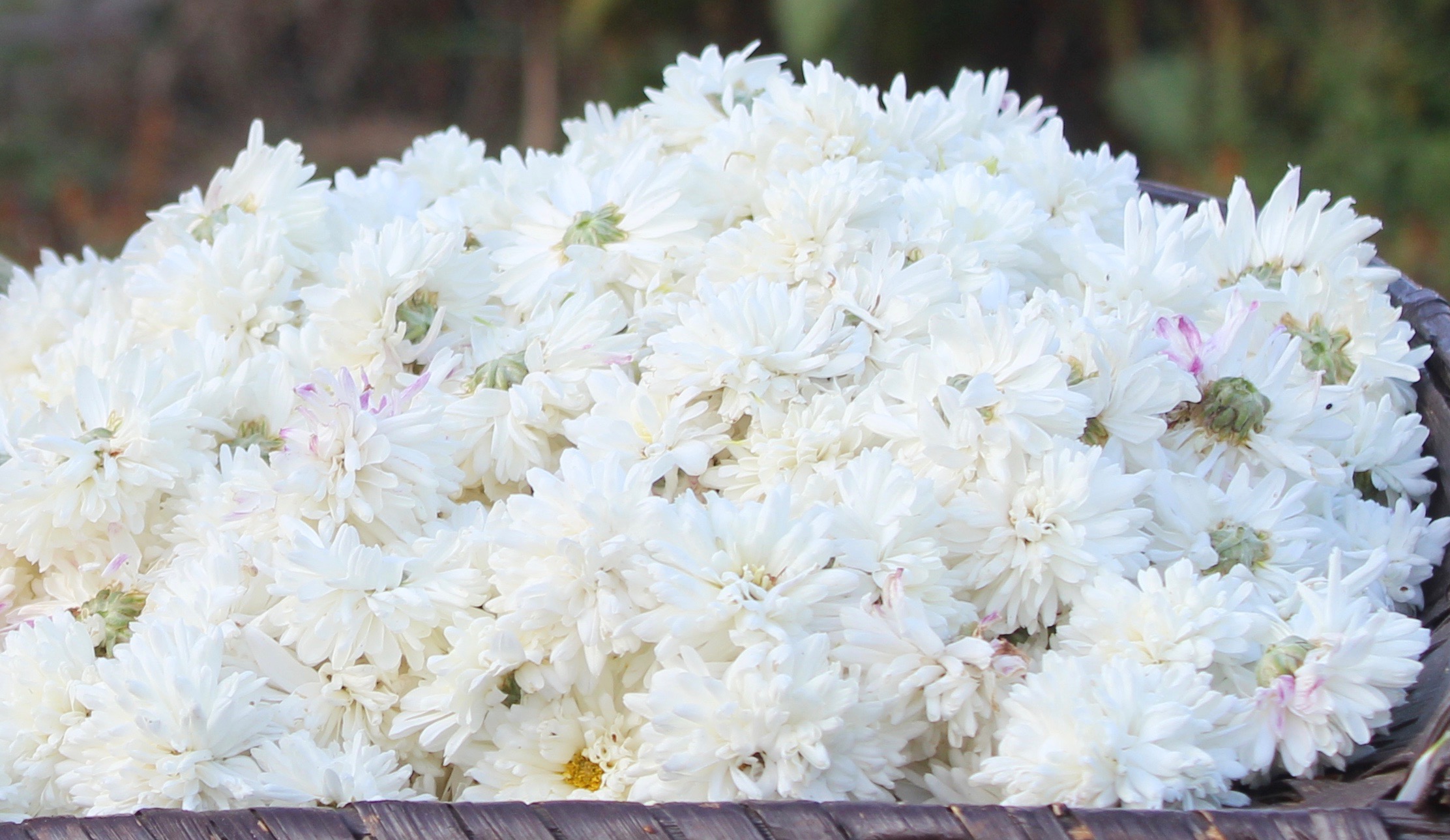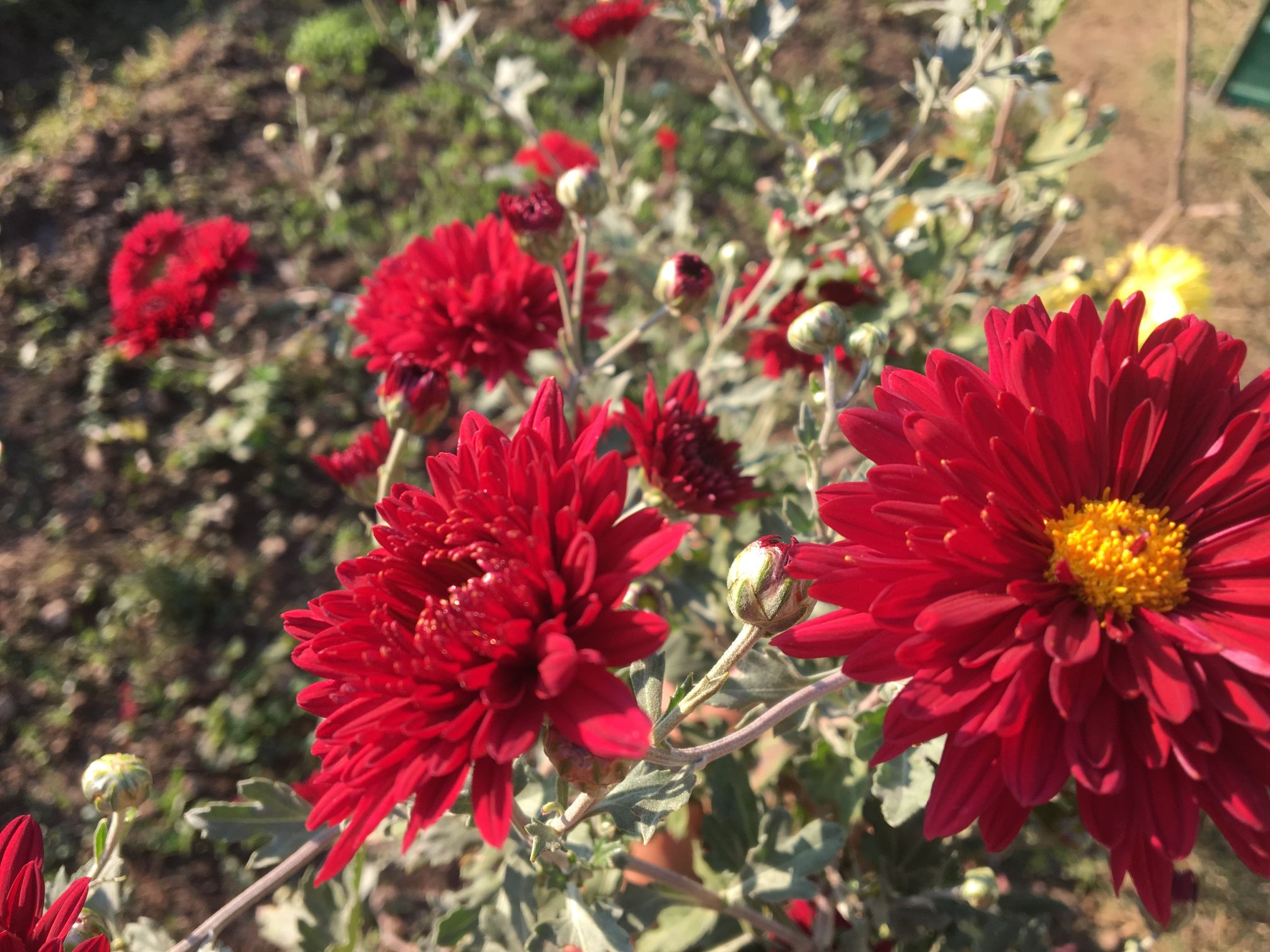Chrysanthemums also known as ‘mums’ are a member of the Asteraceae family and are available in a wide range of brilliant colors, shapes and sizes. The chrysanthemum flowers range from dazzling whites to deep bronzes, and the plants are highlighted with full, dark green leaves. Chrysanthemums are late-season bloomers that really pack a fall punch in the garden.

HOW TO PLANT MUMS
Mums are both annual and perennial.
Spring is the time to get mums in the ground. Planting them in the spring will give the plant a chance to survive in the winter.
Select a sunny location in your garden with moist soil. Sow the seeds 12 inches apart and water regularly to keep the soil moist but not wet. Seedlings emerge in 10-21 days. After new growth appears, use a slow release fertilizer in small amounts to get more blooms but make sure to not over use the fertilizer as it may result in root rot and other plant injury.
SYMBOLISM
The chrysanthemum has a wide variety of meanings all across the globe: In Asia, the flower signifies life and rebirth; in several European nations, mums signifies an expression of sympathy or loss; and in the U.S., mums symbolize optimism, joy, and longevity.
MUM CARE
Light
Mums grow best in full sun. If you plant them in low light, you’ll get a weak plant with less flowers.


Water
Mums require frequent watering, especially in high heat, because they have a shallow root system. A layer of mulch in summer will help conserve water and keep the soil moist and cool.
Soil
Mums grow to its full in well-drained soil. Add compost or other organic material to your soil when you plant to raise a healthy mum plant.
Pruning
Pinch approximately 1 inch from the branch tips two to three times during the growing season to encourage branching and a sturdier plant with more blooms.
Propagation
When grown as perennials, they can be divided every two to three years in the spring. Dig up the plant when new growth begins to appear, replant the new shoots on the outside of the plant. They can also be grown from cuttings taken in the spring. Cut just below a leaf node and root in potting soil. The new plants should be watered daily and kept in sunny areas until well established.
Fertilizer
However these plants do not require fertilizers but in the early stage you can give a slow release fertilizer in small quantities to get more blooms and a healthier plant.
Diseases and Pests
Some diseases that can affect them are leaf spot such as mosaic or stunt. Avoid overly shady locations that cause moisture to remain on the leaves and provide a habitat for diseases. Pests can include aphids, caterpillars, leafhoppers, leafminers, plant bugs, and spider mites.


USES
Chrysanthemum is beneficial for treating many diseases besides its beauty addition to the garden. Here are some of them:
- Chrysanthemum can be used to treat chest pain.
- It is also used to treat type 2 diabetes.
- Chrysanthemum tea is a useful drink to heal the body. This tea is great to aid digestion, is helpful in treating nausea, can clear up colds, can lower fevers.
- Researches also show that it is beneficial in treating prostate cancer as well.
With all these benefits packed inside these flowers, these plants pop up your garden with their shiny, bright and colorful flowers. What are waiting for get ready to plant them in your garden this summer!

Im obliged for the blog.Thanks Again. Really Great.
Very informative blog.Thanks Again. Want more.
You make others really feel approved and valued. You constantly go above as well as past what is anticipated of you.
You bring delight as well as joy wherever you go. Your ability is incredible!
Amazing is the ideal efficiency tool to assist you obtain even more carried out in less time!
Incredible is the most effective and also reliable method to simplify your life.